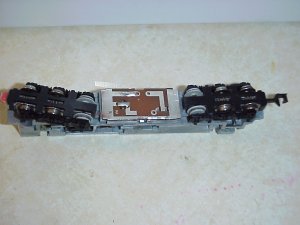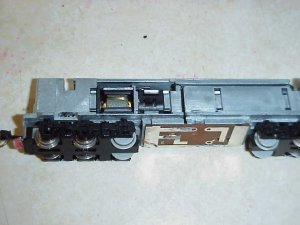I have recently purchased an older trix U30C (it was made in mid to late 70s) and decided to put MT couplers on it. When I put it back together it didn't work. I have done everything I could think of to get to work, but to no avail.
This loco design has a circuit board under the fuel tank and the pickups are small copper stips attached to the wheel assembly.
I am at a lose. I tested the motor and it still works but cannot for the life of me figure out how to get power to and from the motor.
This was a great runner and I would hate to lose it.
Does anybody have any experience with this type of loco, or know of anybody that I could contact or email or is there a web site or anything???
I can email pictures of the setup if needed.
I really frustrated with this...
Please help!!!
foxman
This loco design has a circuit board under the fuel tank and the pickups are small copper stips attached to the wheel assembly.
I am at a lose. I tested the motor and it still works but cannot for the life of me figure out how to get power to and from the motor.
This was a great runner and I would hate to lose it.
Does anybody have any experience with this type of loco, or know of anybody that I could contact or email or is there a web site or anything???
I can email pictures of the setup if needed.
I really frustrated with this...
Please help!!!
foxman



